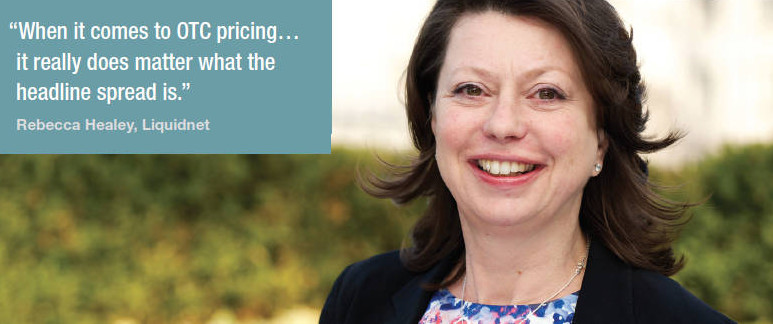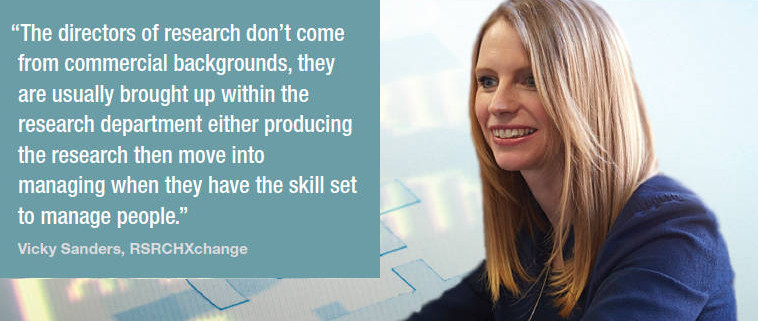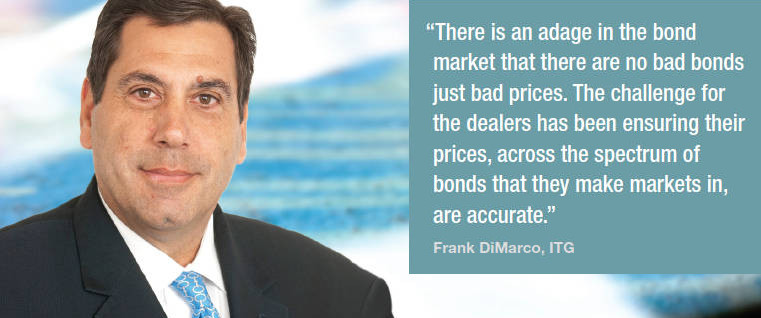Explicit commission payments and a tabloid-style of attention-grabbing research are on the cards under MiFID II, as it reinvents investment economics in fixed income.
No-one buys or sells fixed income research. Execution fees for bonds are hidden in the spread. This will all change from 3rd January 2018. Under the 2018 version of the Markets in Financial Instruments Directive (MiFID II), both must be explicitly paid for.
The global head of fixed income trading, at a tier-one asset manager with over €1 trillion in assets under management, confides, “I have absolutely no idea how this is going to work out.”
The investment lifecycle for bonds will be impacted in several ways by the changes the regulation is going to create. Most importantly execution and research will gain value and will have that value expressed in a price. However in an entirely new market, they may not match up.
Execution costs will still be paid for in the spread, but there are expectations that the spread will widen as a consequence of the increased transparency – and therefore risk – that MiFID II will create around certain instruments.
“Some people were insisting that because of unbundling, and because we would have to start paying for research in fixed income separately, that spreads would tighten; they got laughed out of the room obviously,” says the global head of trading at a mid-tier, long-only asset manager. “Initially the set of instruments subject to pre-trade transparency is very small – around 4% – so I expect banks to widen their spreads on those. But not across the fixed income universe.”
Increased transparency of trading data will also mean greater scrutiny. The regulation’s push toward best execution across fixed income will drive firms towards a deeper understanding of the elements that characterise a specific trade, to justify trading decisions.

Rebecca Healey, European market structure specialist at Liquidnet says, “When it comes to OTC pricing this requires breaking down that price into its constituents so that you can evidence that you got a fair price for what you are trying to do. And so it really does matter what the headline spread is.”
At the same time research is being switched from free marketing material, which is very costly to produce, to a service that the buy side has to pay for, a fundamental change for dealers.

“The sell side has never sold research before,” says Vicky Sanders, co-founder at RSRCHXchange, a marketplace for institutional research.
Putting a figure on execution
Dealers will also see pressure to validate their price formation process, which will need to take place in a more transparent and efficient manner.
Frank DiMarco, managing director and head of fixed income at ITG says, “There is an adage in the bond market that there are no bad bonds just bad prices. The challenge for the dealers has been ensuring their prices, across the spectrum of bonds that they make markets in, are accurate.”

The over-the-counter (OTC) market structure has historically provided sell-side firms with time to firm up a price, however DiMarco notes that under the new regulatory environment they will need to be firm and executable for a given size.
“Therefore, they’ll likely want to be compensated for providing liquidity at the touch,” he says. “Meaning prices are likely to widen and executable sizes may get smaller until such time everyone gets comfortable with the new world order.”
While this may primarily impact more liquid instruments, the interaction with other rules that are limiting dealer participation on a risk basis could shift the economics of trading bonds for some banks and brokers. As a result of reduced risk taking being priced into the spread, explicit commission charges are more likely to be seen in future.
“We have seen a big move in the US from purely principal-based trading to riskless principal,” DiMarco says. “We’ve moved in the same direction in Europe. The question is, at what point does the market structure and model need to change in recognition of these riskless principal transactions to be more representative of an agency flow, where that mark up or mark down is explicitly designated on the transaction?”
Several elements will make execution a more quantifiable process post-MiFID II; increased pre-trade data resulting from initiatives including proprietary buy-side technology, commercial offerings such as Algomi and B2Scan, alongside the increased level of post-trade data that will be available as a result of transparency obligations.
“If you pay for research and you are unbundling the two then there is probably the implication that you will be required to define your execution costs too. And therefore that will be under scrutiny much more than it was before,” says Jonathan Gray, Head of Fixed Income EMEA at block-trading specialist Liquidnet.
Negotiating the value of research
The push for explicit payments to ensure that inducements are not being offered for business is decades old. The upshot under MiFID II will mean that research payment undergoes a total revolution. As there is no cost for fixed income research under current arrangements, buy- and sell-side firms are frantically trying to set up models for pricing research that both can agree upon.
“The industry is in this sort of stalemate on pricing and agreeing contracts for research,” says Sanders.
The buy-side payment models are established under the directive, with a direct payment for research from the investment firm’s own pocket; a direct charge made to the investor client to fund a Research Payment Account (RPA) or a charge made to the end investor alongside the transaction commissions, which is used to fund an RPA. The latter two are notably more complex as end investor clients need to have charges broken down and validated, and where this covers European Union and non-EU investment there may be inconsistent service.
“It’s not that simple to just go ahead and implement the MiFID requirements to jurisdictions around the world,” says Eva Mykolenko, associate chief counsel, Securities Regulation, at the Investment Company Institute (ICI) a buy-side trade body. “Firms that have a global research and trading platform would like to maintain that unified approach throughout the firm. They are looking for a solution that would allow them to do that. However they need to check whether there are any rules or provisions in other jurisdictions in which they operate that would challenge their firm-wide implementation of a framework that is compliant with MiFID II.”
Notably in the US, Congress provided a safe-harbour agreement since the abolition of fixed commissions in 1975, so investment managers can use commission dollars paid by managed accounts to acquire research as well as execution services.
Jennifer Choi, associate general counsel at the ICI says, “They can’t work in a vacuum; they have to work with their brokers in terms of how the payments are going to be made, and what the parameters would be. So it’s not a unilateral decision that our members are making. They have to work out these solutions with their brokers.”
A key element will be the initial decision on costing. Sanders notes that whatever level an asset manager is going to set their budget in 2018, it is very unlikely to go up.
“If their prices are too high then they risk being cut off altogether,” she says. “If they lock in too low a price they are never going to be able to see inflation. So getting that right price puts a lot of pressure on the sell side.”
The tabloidisation of research
The traditional research workflow within a broker would have three major components. A research analyst writes the analysis, the salesperson decides who it goes to, and the trader collects the money that pays for it.
“One of the biggest things that has to change, as the economics of the street alter and become compressed is that a dealer can’t offer ‘white gloves’ service to their clients,” says Blair Livingston, CEO of smart content platform Street Contxt, which uses machine learning to support research provision. “Instead of having a salesperson and trader, you have to have someone write the thing, then it automatically goes out to the right client and then the clients pay automatically for it.”
Where research was historically a marketing tool used to drive the relationship, the equivalent of a very expensive and potentially valuable free gift, its development and provision was handled accordingly.
Sanders says, “The directors of research don’t come from commercial backgrounds, they are usually brought up within the research department either producing the research then move into managing when they have the skill set to manage people.”
As the business becomes a determinedly commercial operation with a target to sell products, that will be reflected in the skillset of the team. However the sell side has shown limited appetite to address that.
“In light of that, it’s somewhat surprising to me that you haven’t seen at least someone taking a risk and putting in someone who has been instrumental in putting up paywalls in other industries or has the experience of selling content in financial journalism, which is very close,” says Sanders. “Even looking at market research businesses, bringing in that experience to try and create commercial capability for the research department. I am surprised we haven’t seen that.”
And while pricing is being addressed, albeit without a clear resolution, quality of research is also likely to change as a result of its commercialisation. Firstly the volume will reduce significantly from the 3 million research reports that RSRCHXchange believes the average asset management firm receives a year.
“Much of that volume might be economic commentary responses to economic figures, or macro events or in the equity growth earnings, pre released documents and then also the follow up on earnings,” notes Sanders. “A lot of that is unlikely to be researched, and that’s a huge amount of volume. We will see a focus on quality, so that they are generating the business as they are attractive to their clients.”
A boon for marketplaces
Greater transparency on price inevitably creates downward pressure on fees. However to make those comparisons, firms will need hubs at which the costs of execution and research can be seen and compared on a like-for-like basis.
“I think the fact that we have an explicit cost of dealing, i.e. a commission which is quite rare for fixed income is an advantage,” says Gray. “If you are paying bid and offer you have no idea really what you are paying for execution, it doesn’t stand up to scrutiny.”
Livingston sees the valuation of analyst resource being applied in the same way, using a marketplace model. “Right now there is a marketplace in stock, bonds, currencies; why isn’t there a marketplace in someone’s time?” he asks. “Why can’t you go on a platform and say, this guy is the top analyst on US consumer tech, what is the bid ask on an hour of his time right now?”
In a commercial race there is always the risk that selling takes priority over delivery. While one can argue that is not sustainable in the long term, if it kills the competition in the short term it is still a winning strategy. As that dynamic impacts fixed income investment, asset managers will need to become cognisant of sell-side value, and not fixate on price.
©TheDESK 2017
[divider_to_top]
©Markets Media Europe 2025

























